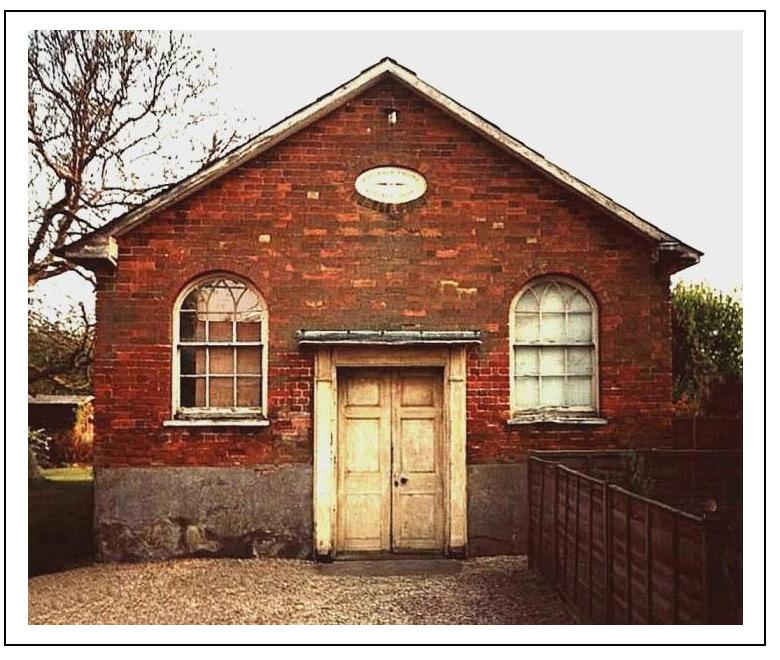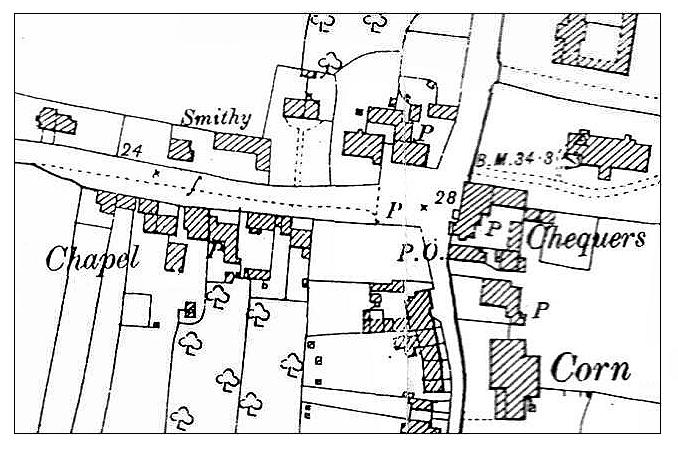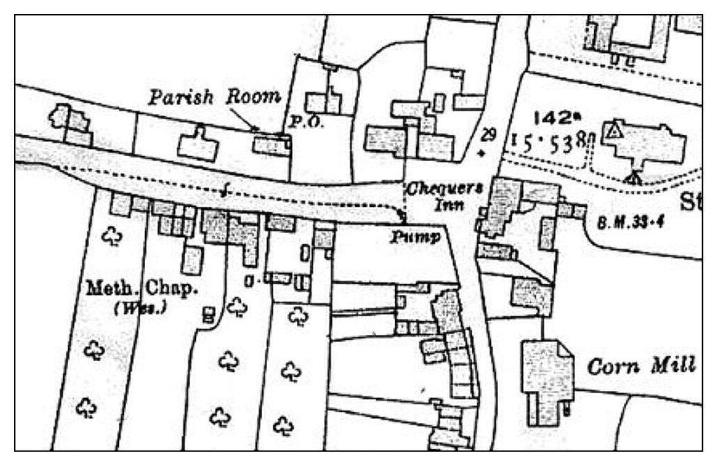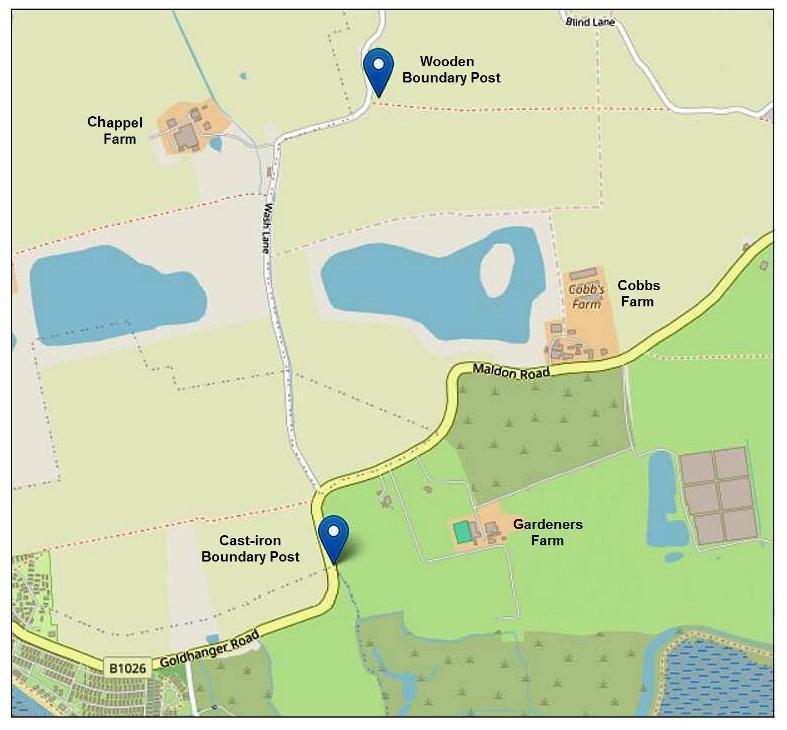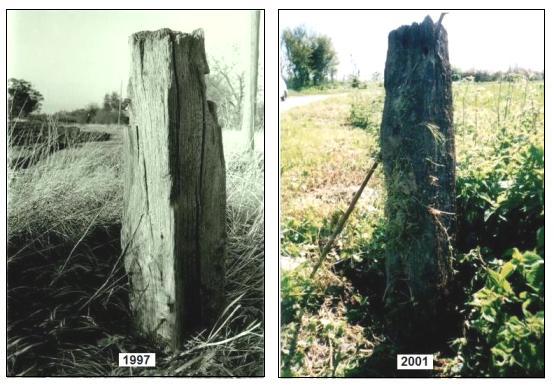more…
contents
The Wesleyan Chapel
The building is set back between No’s 7 & 9 Head Street, but
ceased to be a Methodist Chapel in 1967.
|
|
|
|
an early photograph |
a painting by John Wilkin |
The
plaque over the entrance declares that the Chapel was built in October 1839. However,
the Chapel records of 1829 refer to a Goldhanger Methodist Chapel with 100
places of worship and later refer to 60 places. Some of the Goldhanger Friendly
Society founders were preachers at the Chapel and meetings were held there.
Friendly Society Rules of 1876 refer to meetings held "At a certain
meeting place or Wesleyan Chapel".
The Chapel was
finally closed in 1967 and in 1970 it was sold for £100 to the owners of the
adjacent property. At the time, planning permission was sought to demolish the
Chapel and replace it with a commercial building, but this was refused. The building was unused for
many years, but has been fully restored and remains part of the adjacent
private residence. In 1993 Maura Benham wrote a 12-page
booklet on the history of the chapel from where these notes originate. More
details ,images and the full text of Maura’s booklet is at…
The
Story of the Chapel in Goldhanger
The British Legion Hall
The British
Legion Hall or Hut was located half way down in Fish Street from the late 1940s
until 1967. Funds raised in the village for residents serving in World War Two were used to purchase the hall after the
troops returned at the end of the conflict. The purchase was supported by a Mr
Lane and Mr. Jack Cohen of Goldhanger Fruit
Farms, Tolleshunt Major, later of TESCO fame. The land which was previously an
orchard was donated by local farmer, Mr Sweetland, and it was handed over to
the Royal British Legion to operate and maintain it. Deeds show that it was
transferred to the Royal British Legion in 1951 from a B Miller, baker, of Fish
St.
In the ten years
immediately after the war, the Goldhanger branch of the Legion had many
enthusiastic supporters. Monthly Catholic services also took place in the hall
and it was used by the sailing club and the youth club. However, later it was
used less and less, as at that time there was also the village hall, parish
rooms, and two pubs. So the British Legion sold it together with the land in
1967 to builders Wells & Ridgwell of Hazeleigh. The modular construction of
the building meant it could easily taken apart and moved to Purleigh where it
became the Purleigh cricket club pavilion, where it remains. Here is part of a
magazine article published in the early 1970s that refers to purchasing the
Goldhanger Hut and has two photos of it when it had just been moved.
This photographs
from the 1950s shows the interior of the hut with the Royal British Legion
branch flags displayed with a photograph of the Queen…

The flags
remained in the village for many years after the hut was moved and were hung in
St Peter’s Church, but have long since been passed on to Royal British Legion
HQ.
The Parish Room

The Parish Room The Parsonage
with Parish Room to the right .
A single “Parish
Room” was built in 1906 by the Rector the Revd. Frederick
Gardner, and was located in the grounds of The Parsonage, between No’s 8
& 10 Head Street.
The Revd Gardner
bought The Limes (No 10) from the Revd. Leigh’s estate
in 1906 when 20 of his properties in Goldhanger
were put up for sale. He then re-named it as The Parsonage, accomodated his Curates there and built the Parish Room next door on the
land he had just acquired. It was originally provided as a reading room for
residents. At first it was known as the “Church Room” and then late as the
“Parish Hall”.
One reason for
its demolition in 1980 was that it began to lean over slightly, with together
with its timbered gable and leaded windows, gave it a not unattractive
appearance of a much older building. The reason for the lean was that it was
built on the site of a previous “smithy” which had a saw-pit within it. Here
are two early maps that show the Smithy and the Parish Room...
1900s map
1923 map
It became known
as the “Parish Rooms” after volunteers built a second small room at the rear to
to accommodate a full size snooker table which was given to the village by a
local benefactor. After the extension was completed, it was determined that a
rear fire exit was required by law, so a door was added but no access was
available and it always opened straight onto a brick wall.
Of the many
functions the Parish Rooms was used for, these are remembered: Mothers Union, Women’s Institute, Goldhanger
Players, village dances, fire warden centre during WW-2, and the Youth Club.
In 1937 the
Parish Rooms were outmoded by the building of the new and much larger Village Hall further along Head St. and the
Parish Rooms were then just used as a Youth Club. Sadly the two photos above are the only ones
in the archive that show the building, partly because most of its life it was
hidden behind trees. However a post card scene of the two
pumps in The Square in winter shows part of the Parish Room immediate
behind the nearest pump.
The demolition
of the Parish Rooms also resulted in the loss of a significant section of red brick wall. These were and still are a
significant feature of the village and included an attractive curved entrance
way led into the building.
Petrol Station & Garage
The petrol station occupied two
locations in the centre of the village. Originally it was in The Square
adjacent to Charles Mann’s shop. This photo taken in the
early 1900s shows Charles Mann and his family outside the shop in The Square
with two small metal signs advertising “Shell Motor Spirit Sold Here”…


A few years after this picture was taken
two manual pumps were installed in the wall on the corner, shown here in the
1930s and as they are in 2020…
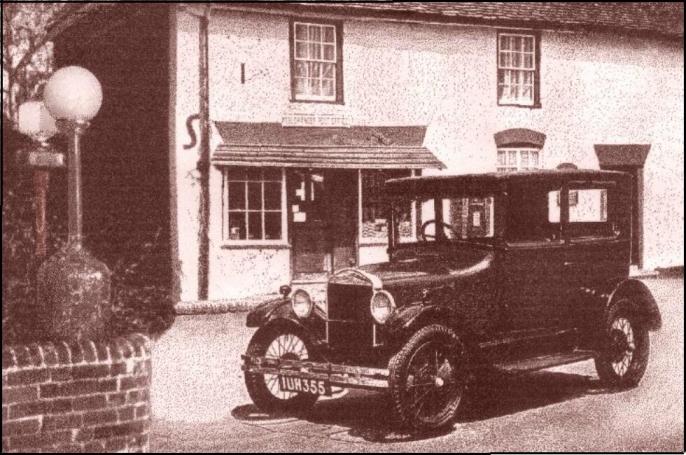
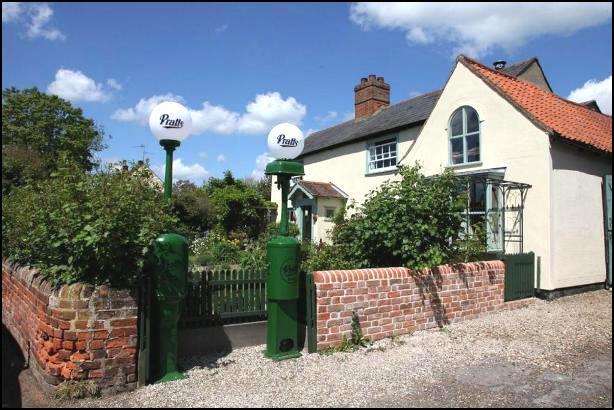
Probably in the 1930s a new filling
station and serving garage was built around the corner in Church Street,
opposite the Church…


The corrugated
iron hut used as the workshop showed all the signs of being a redundant first
world war building typical of those from the Osea Island naval base. The
filling station finally closed in 2009.
Boundary Posts
The location of
two ancient boundary posts has been established, one is, or was, on the
Goldhanger Rd towards Heybridge near Wash Bridge, the other is, or was, in Wash
Lane close to Chappel Farm...
from the records
the appearance of both posts is known...
|
|
|
|
Cast-iron Boundary Post in Maldon Rd |
Wooden Boundary Post in Wash Lane |
The cast iron post
in Maldon Rd is Grade-II listed at...
https://britishlistedbuildings.co.uk/101256978-boundary-post-goldhanger
The Wash Lane post was previously identified
on the web with the 1997 photo shown above as...
“the
only known example of a 19th century oak Parish boundary post in Essex”
Sadly both posts are no longer visible, either because they are
buried in the hedgerows and undergrowth or no longer exist.
top of
Goldhanger Lost Pit Cottages home
